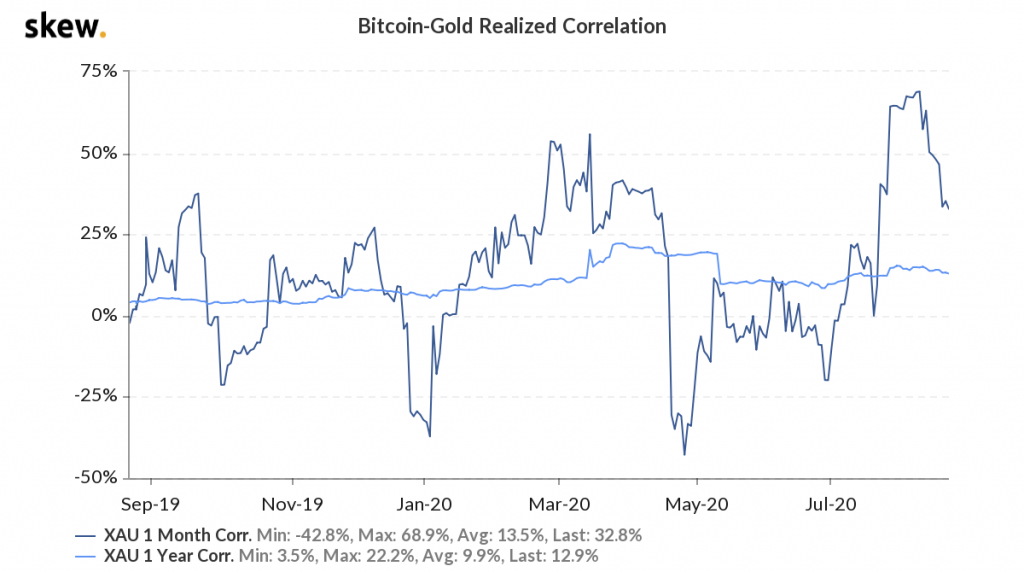Bitcoin
U.S Dollar’s loss may see Bitcoin overtake Gold in the long run

When trading, many of the market’s traders have often observed a low correlation between Bitcoin and other global financial assets. That is interesting, but not unexpected since as a prospective store of value candidate it is supposed to be uncorrelated to a great degree. Here, it must be noted, however, that the correlation tends to change depending on market sentiment, demand, and market dominance. While the shift may not be robust, it has a direct effect on spot market prices, volume, and Open Interest in the Bitcoin derivatives market.
Since most markets currently available for trading are correlated in some way, Bitcoin is often perceived to be a relatively uncorrelated asset, one providing traders with the opportunity to hedge, diversify their portfolios, and treat it as an alternative investment. However, this changed over the past 90 days.
Bitcoin’s correlation with Gold crossed 64.3% on 27 July 2020, following which, it hit a new ATH of 68.76% on 6 August 2020. Within a few weeks, the correlation in question had risen to touch a new peak. However, this may be short-lived, something evidenced by the fact that at press time, the realized correlation was falling on the charts.
On comparing the one-month correlation to the one-year chart, it can be observed that this correlation may be purely coincidental or driven by factors like the COVID-19 pandemic and the search for a safe haven, one that has limited supply and is easily accessible without entering the traditional banking infrastructure.
While the correlation with gold may be speculative, its inverse correlation with the USD is significant. The trend in question had become inverse sometime in March 2020, and it has been the same for over 4 months now. This observation can also be coupled with the fact that Bitcoin’s price is inversely related to the supply of USDT in the spot market on crypto-crypto exchanges. As more USDT is moved to fiat-crypto exchanges, Bitcoin’s liquidity and its price increase.
When comparing BTC to USD, entrepreneur and quant trader Qiao Wang had recently said that while the correlation between different assets may have changed, traders must tell the difference between normal and non-normal environments. The present-day market, many would argue, is one of the latter, and ergo, these correlations would need to be looked at accordingly.
Source: Twitter
Previously when the USD had slipped, Gold was the safe haven that day traders and investors flocked to. However, this season, Bitcoin has emerged as a stronger and mature asset, with steady price gain momentum and demand that matches increasing liquidity.
In fact, another ‘cryptopreneur’ and Founder of Heisenberg Cap, Max Keiser, had commented on Gold’s price, while also expanding on its allocation in Warren Buffett’s portfolio.
Source: Twitter
Given that Buffett is dumping banks and moving into investing in a gold mining company and not the precious metal itself, the crypto-community is bullish on Bitcoin investments. And, it’s not hard to not see why. As Keiser said, “The importance cannot be overstated. He (Buffett) sees global central banks have completely lost control; they’re printing trillions and Killing fiat money.”
Meanwhile, Bitcoin’s technology continues to mature and the cryptocurrency continues to have an inverse correlation with USD. This is crucial since Gold’s correlation with USD will go on to exist, irrespective of Bitcoin’s increasing dominance and price, making the latter an ideal alternative investment.
